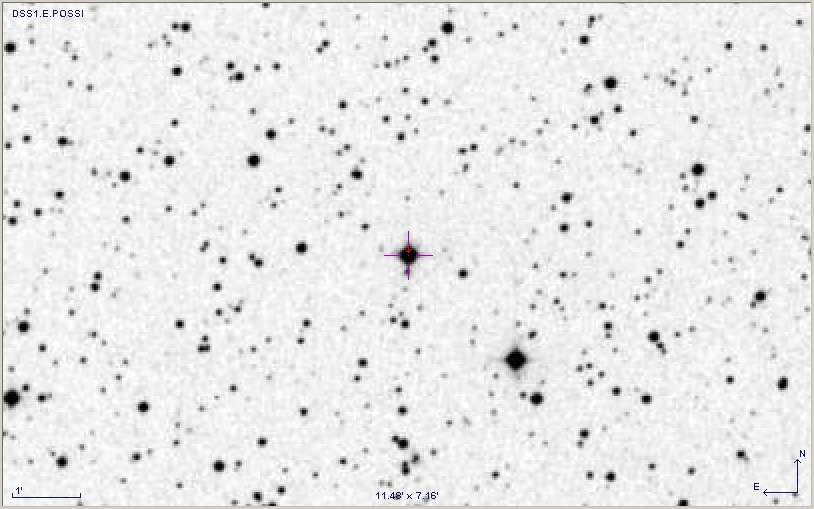
The Kepler Mission has produced a light curve
showing the secondary eclipse: internal link
The period needs a small adjustment to shorter value, according
to the amateur LCs in this archive.
This is a very "flat bottomed" transit, implying
small limb darkening.
Basic data - Updates Terminated 2009.07.20
RA = 19:28:59.4, DE = +47:58:10
Season = July 14
V = 10.5
HJDo = 3785.8503
(8) & P = 2.2047298
(24) day (Schneider listing in Extrasolar Planets Encyclopaedia)
HJDo = 3785.84958 (14) & P = 2.2047215 (14) day
(AXA fit); or even better HJDo = 4667.73819 (69) & P = 2.2047215 (14) day (AXA fit))
HJDo = & P = 2.204802 (63) as determined
by Borucki et al 2009, using the Kepler space telescope.
Depth = 7.2 ±
0.2 mmag (VRI-band)
Length = 3.84 ±
0.04 hr
Fp = 0.19 ±
0.04, F2 = 0.98 ± 0.05
b = 0.37
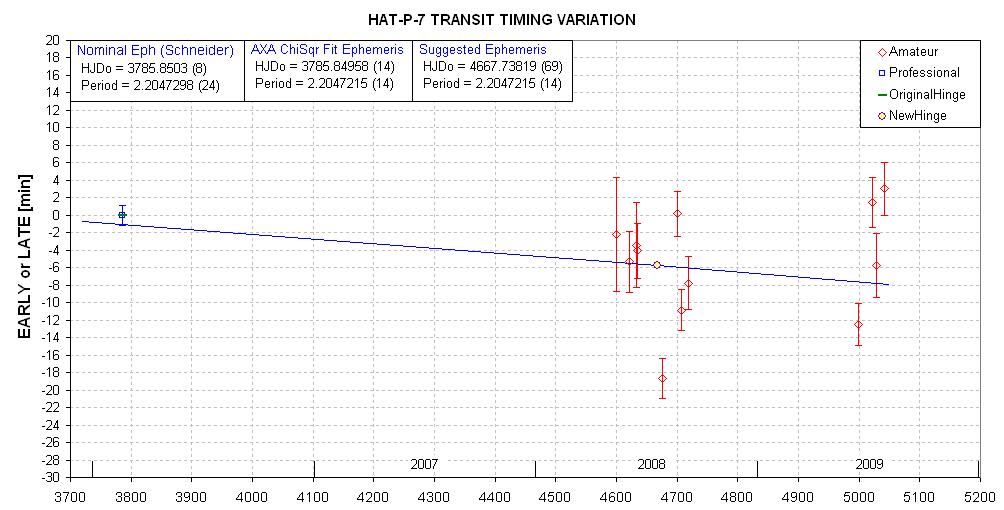

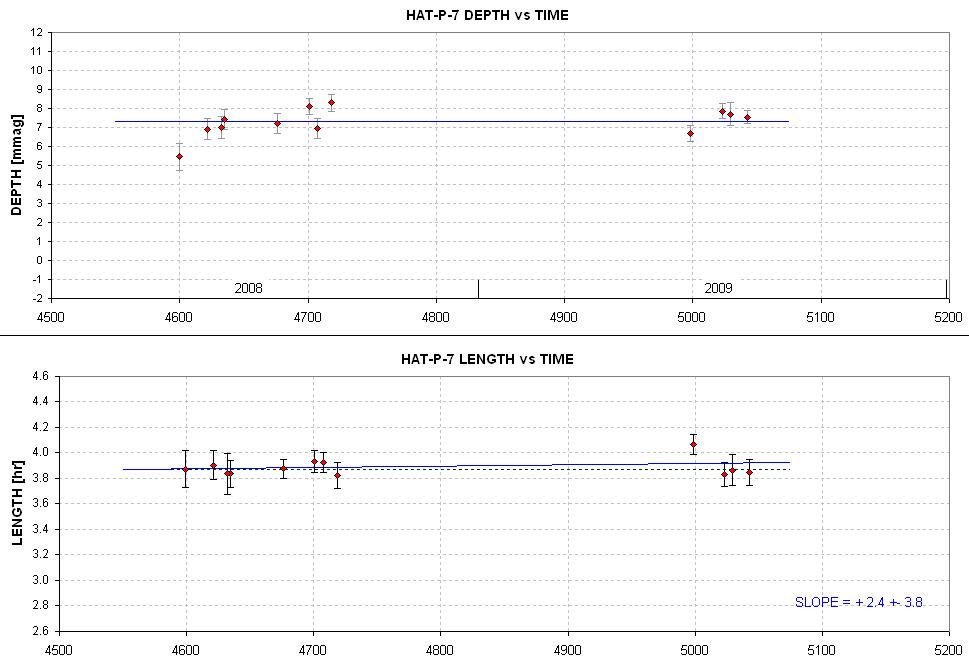
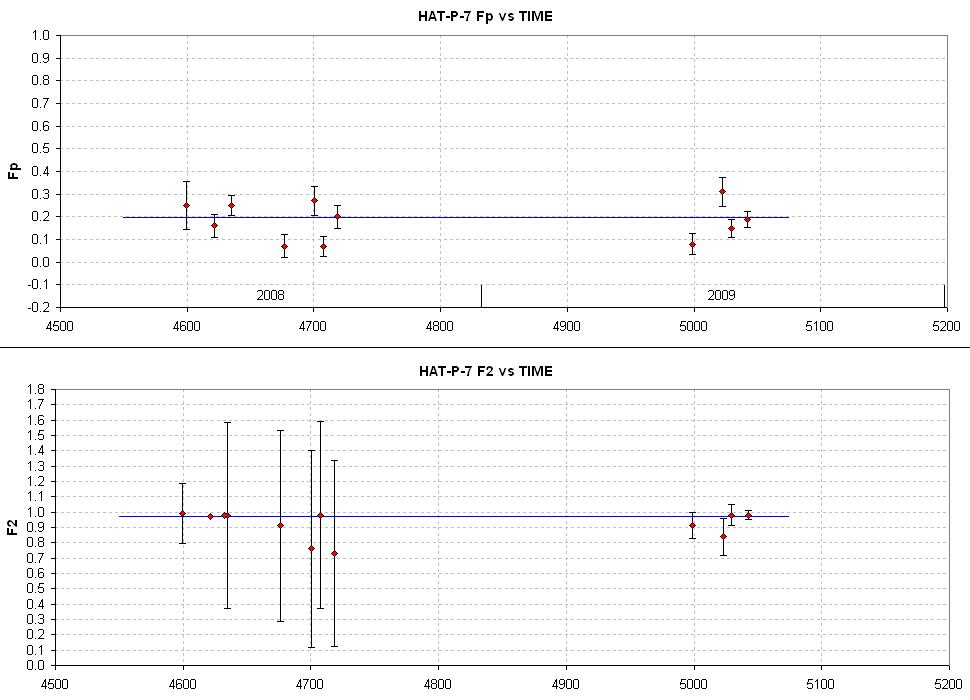
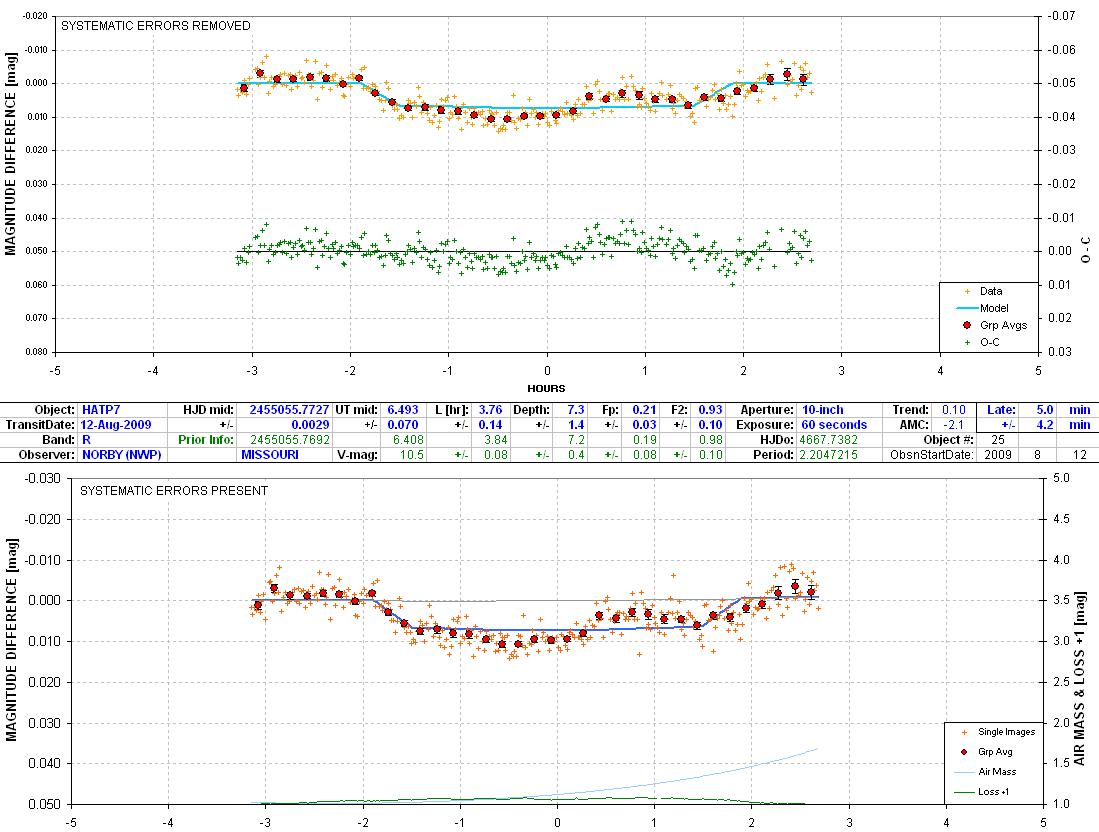
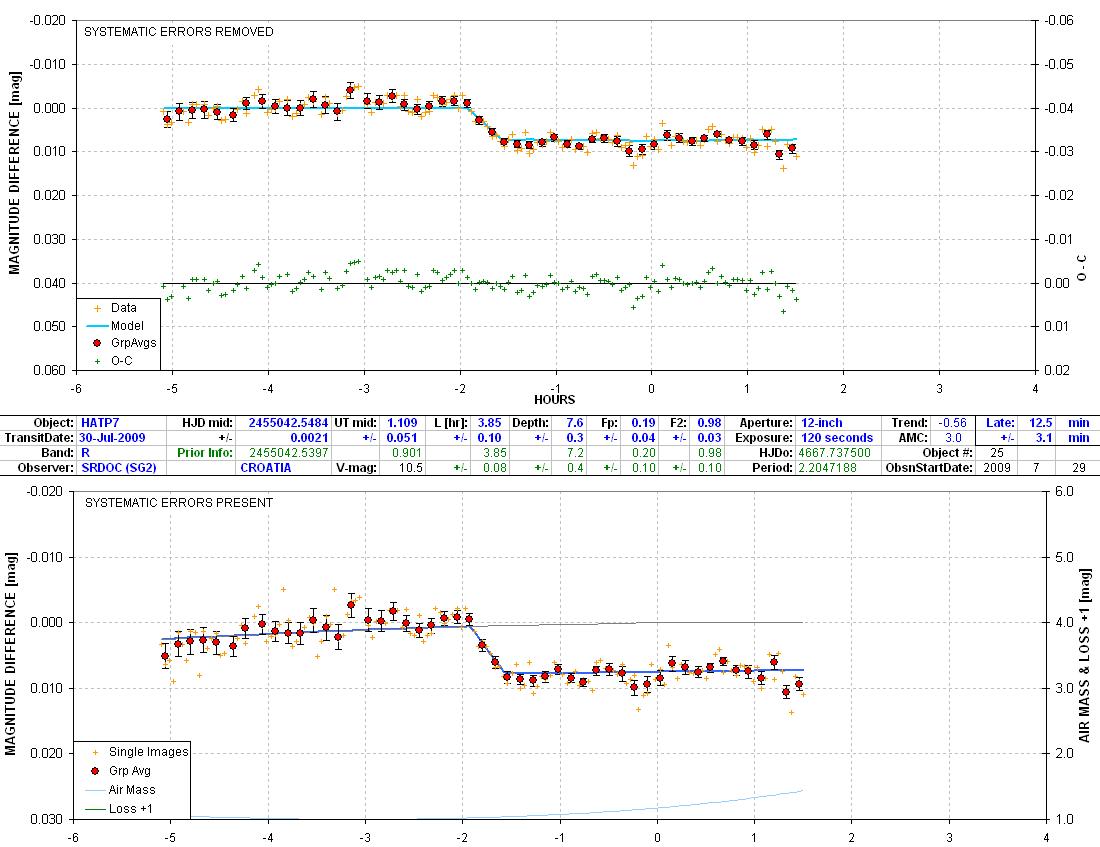
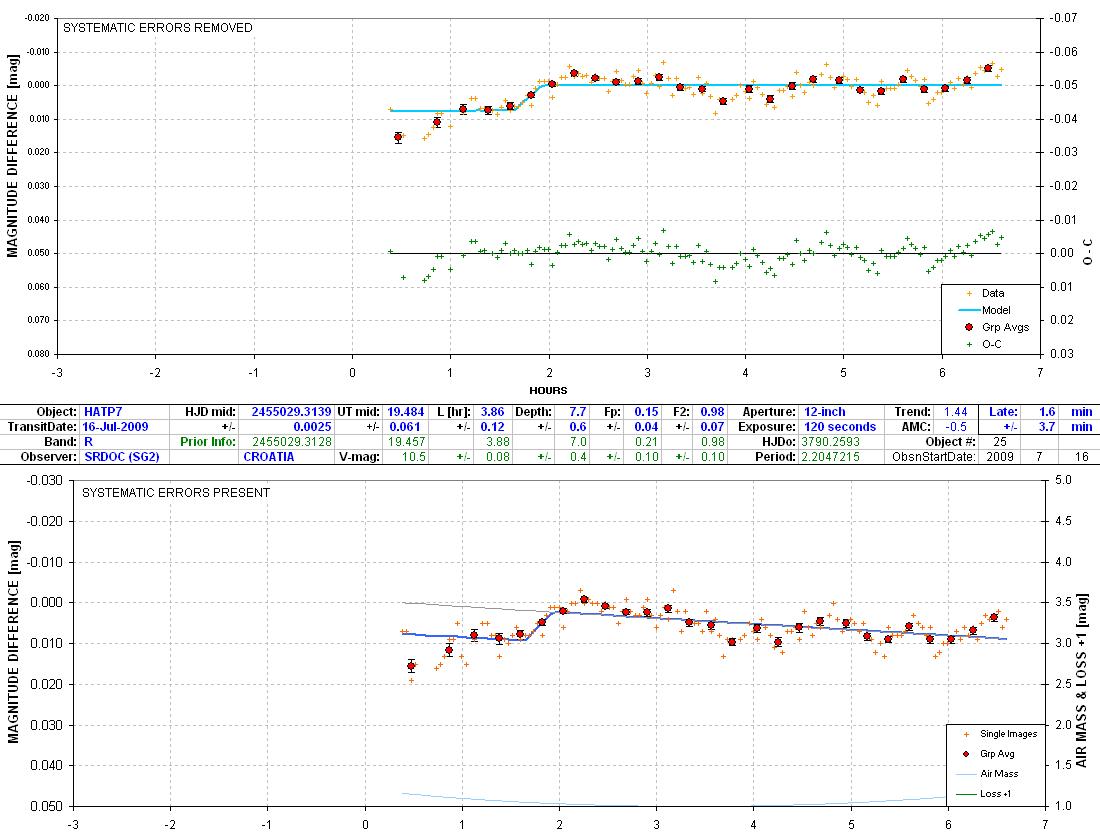
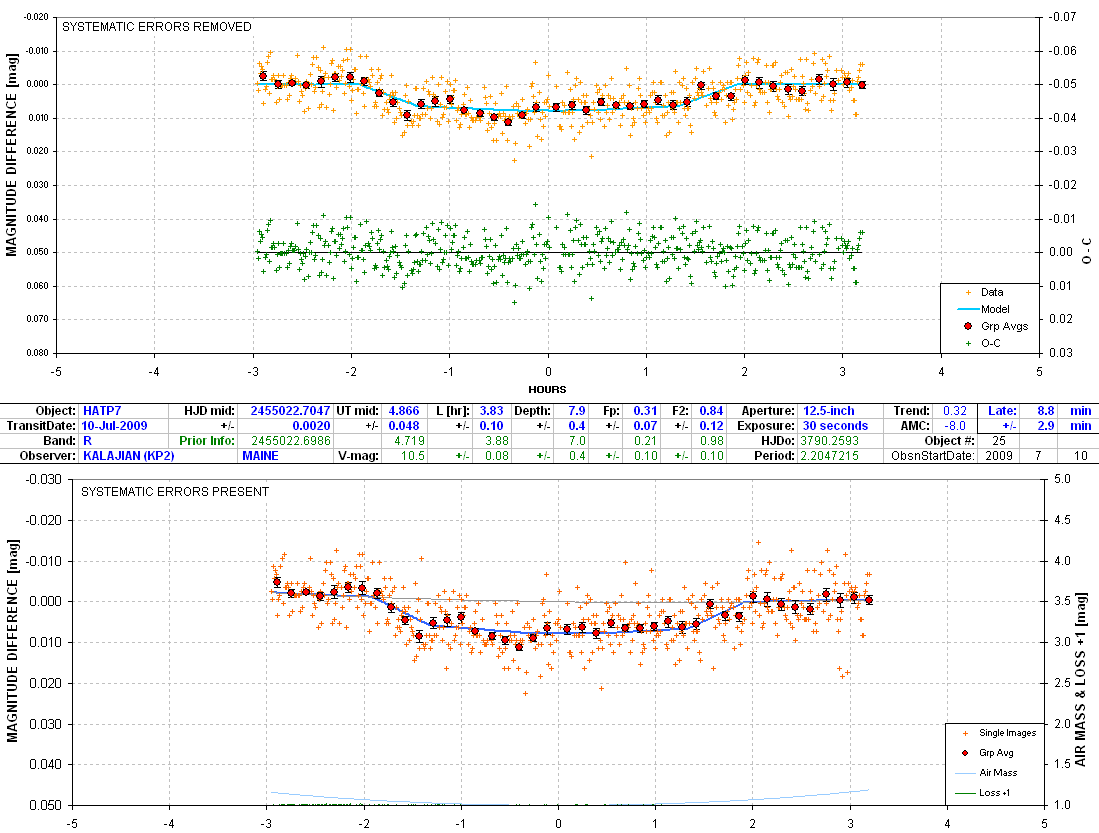
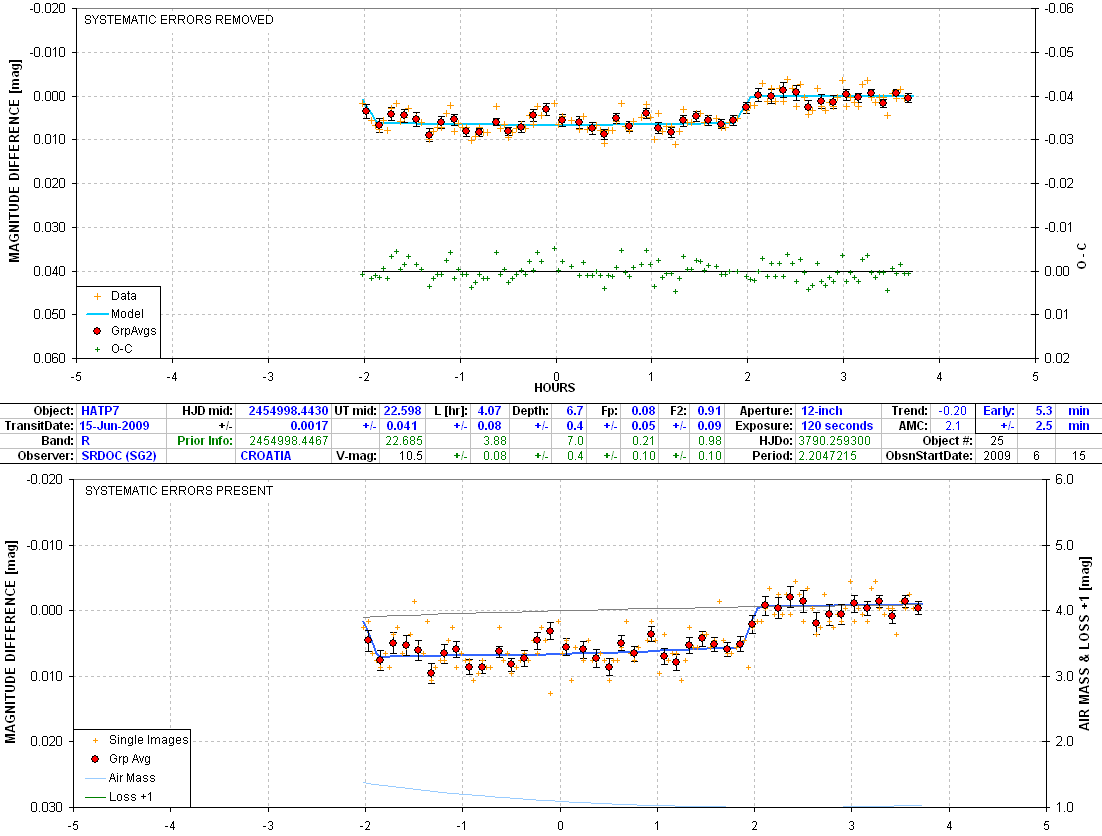
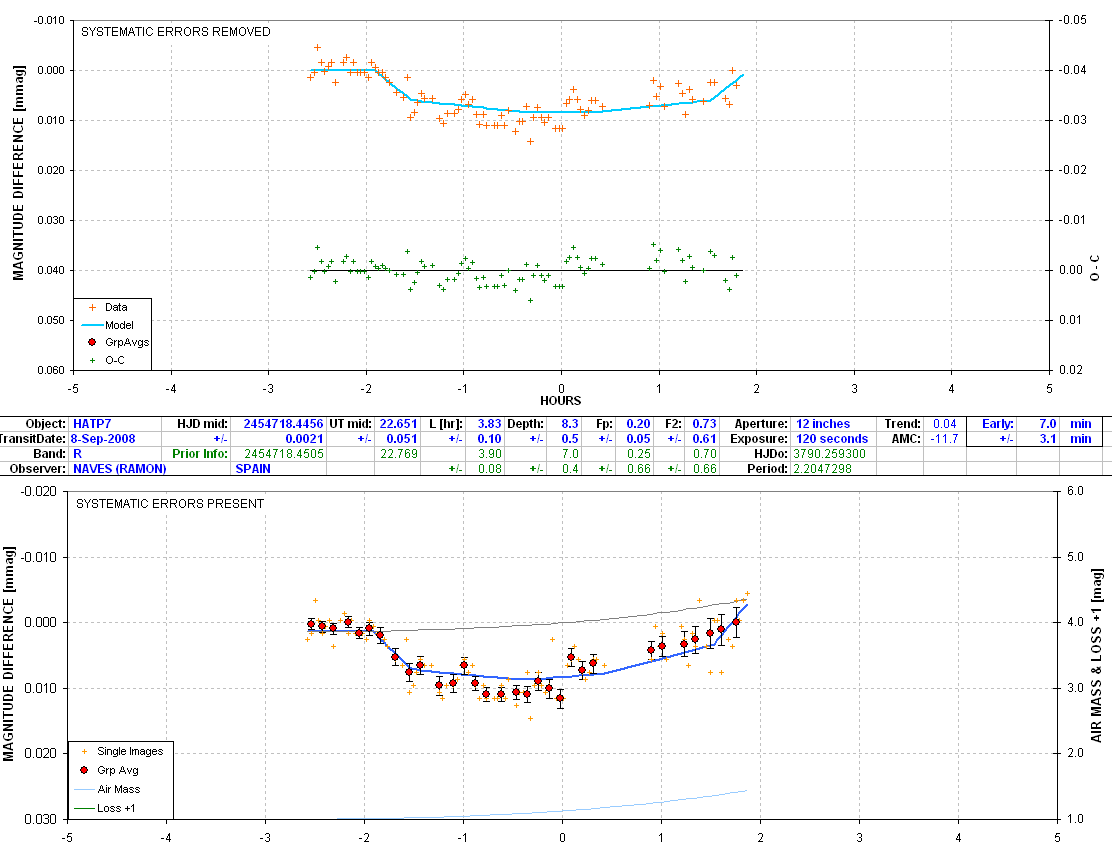
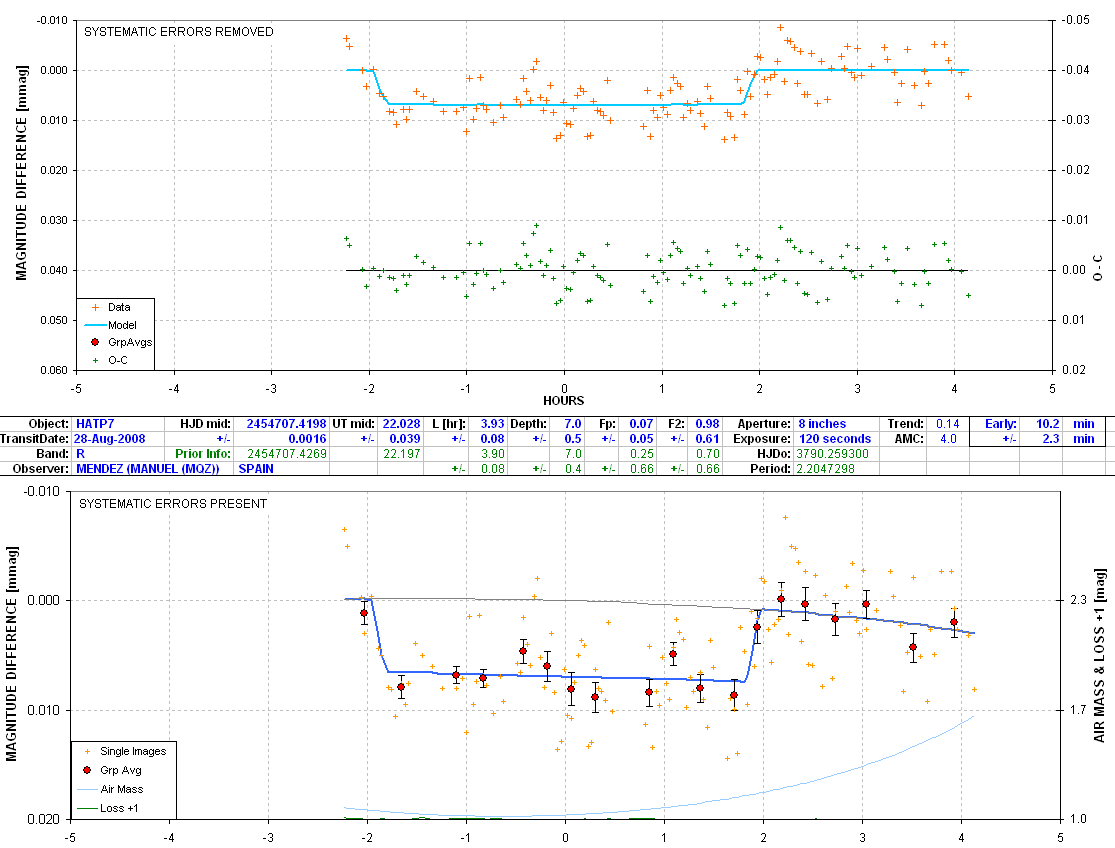
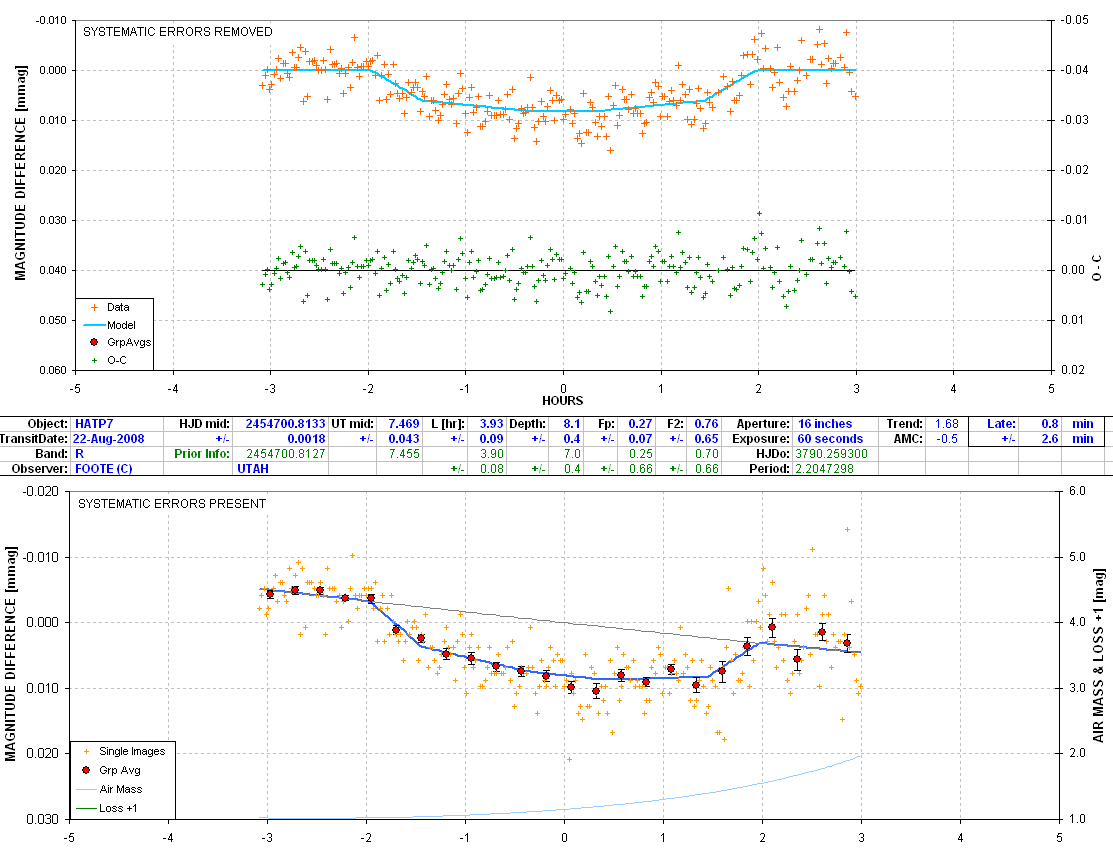
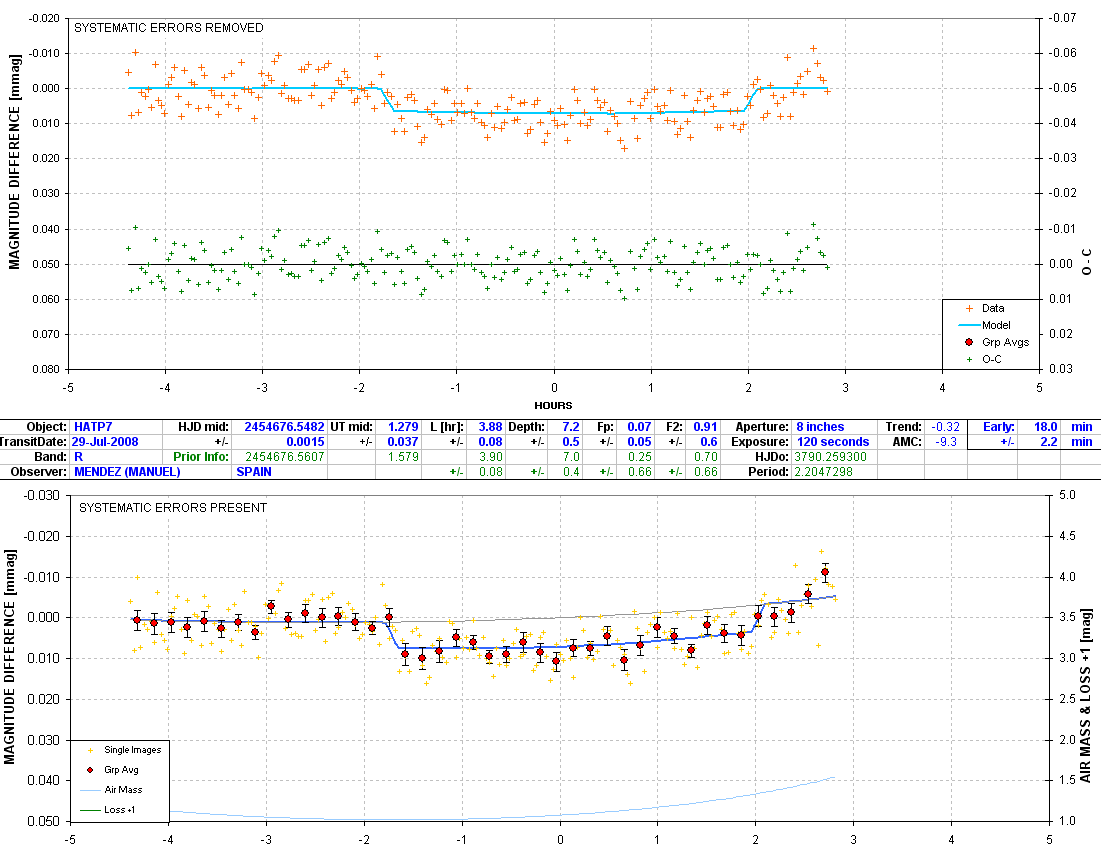
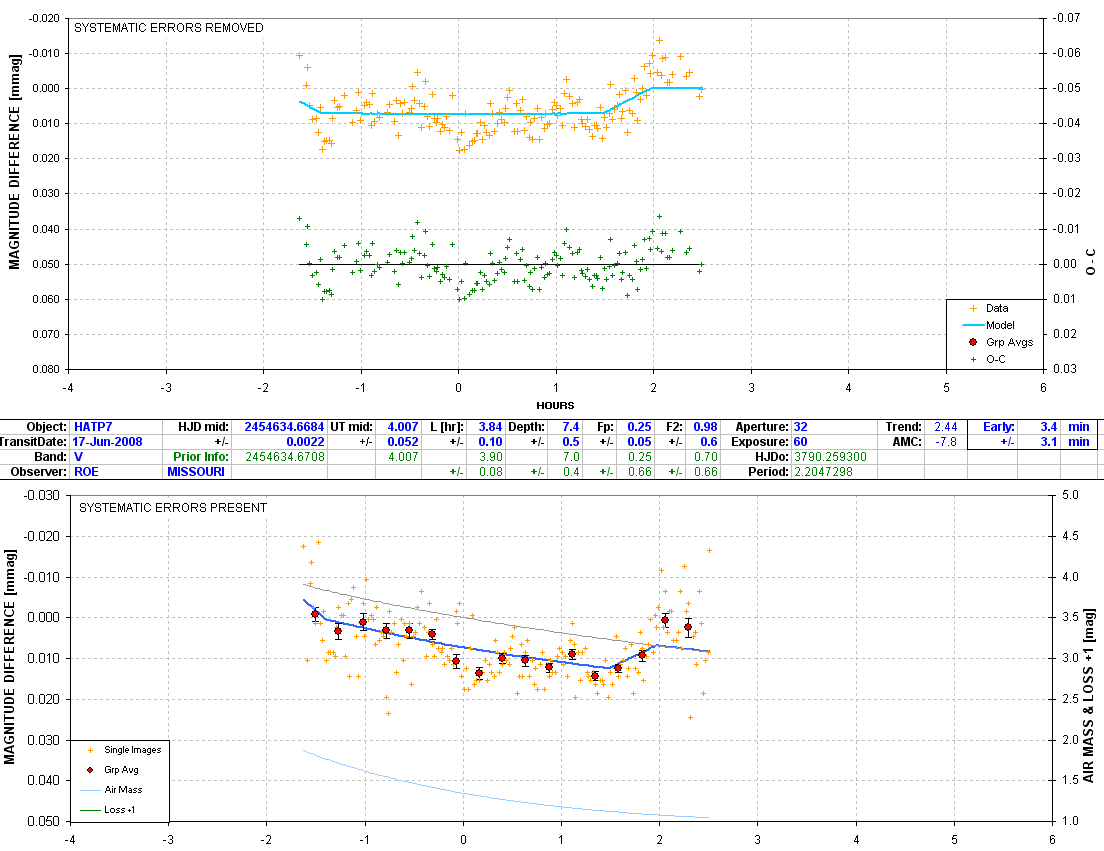
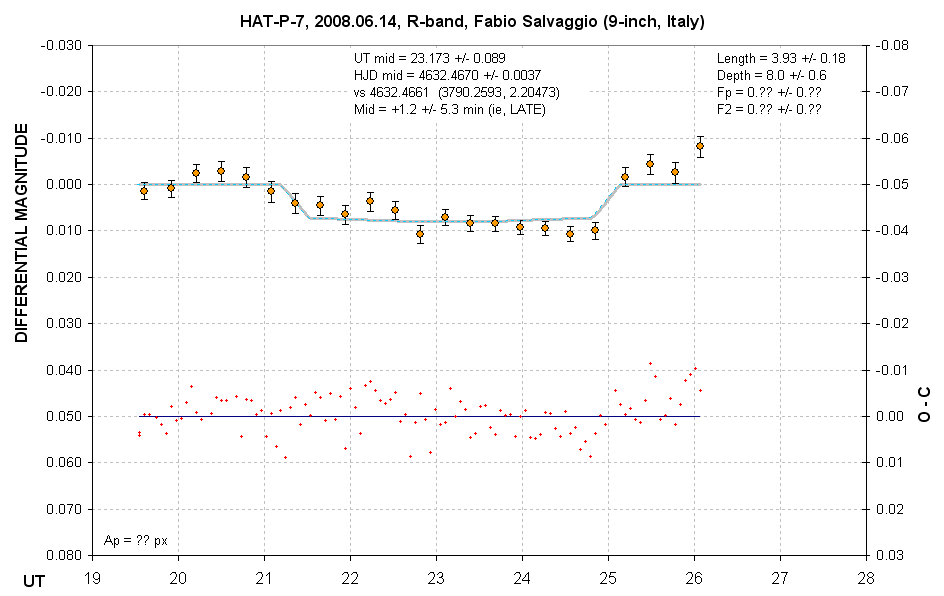
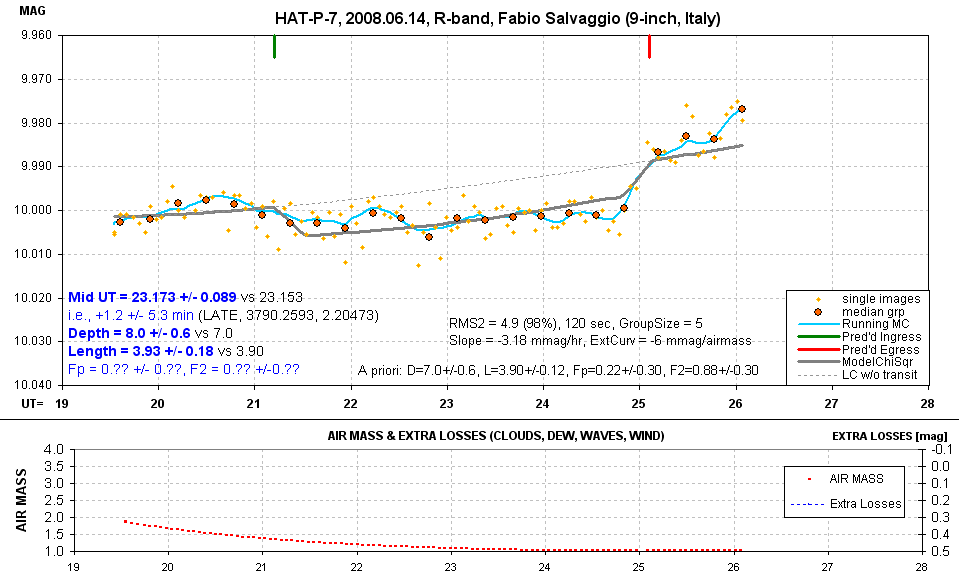
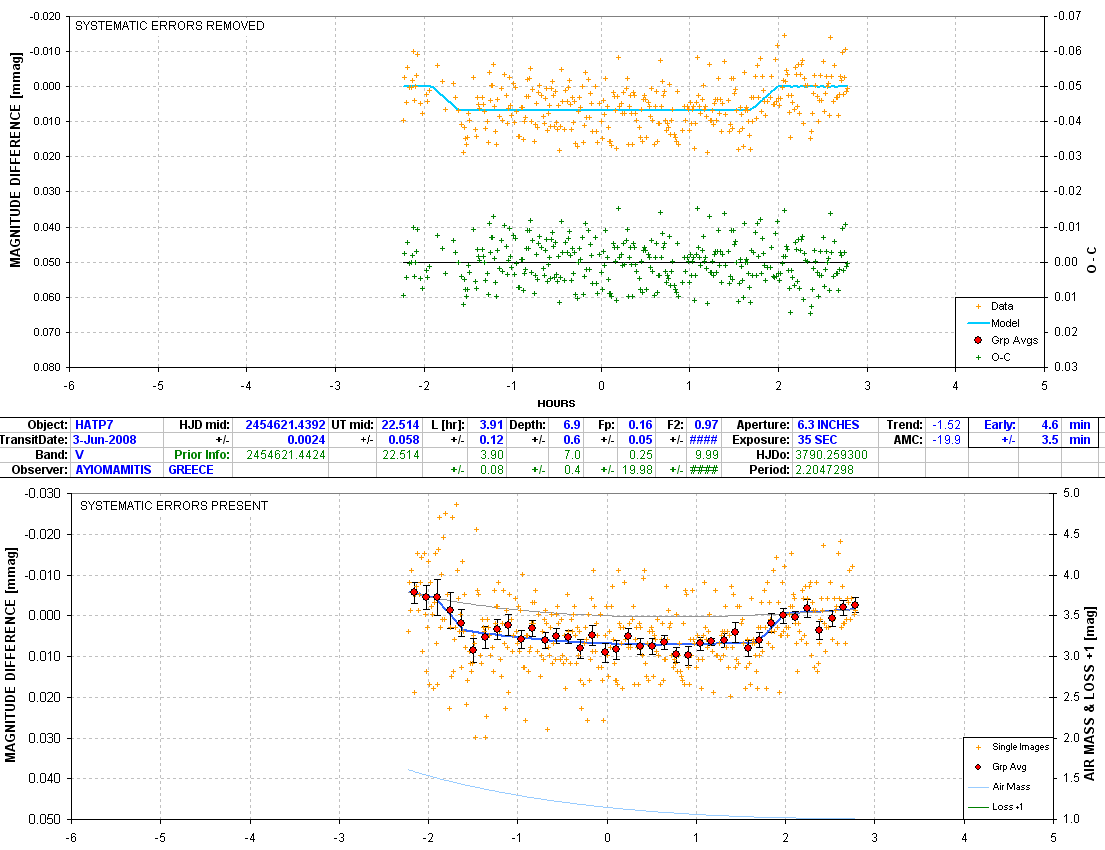
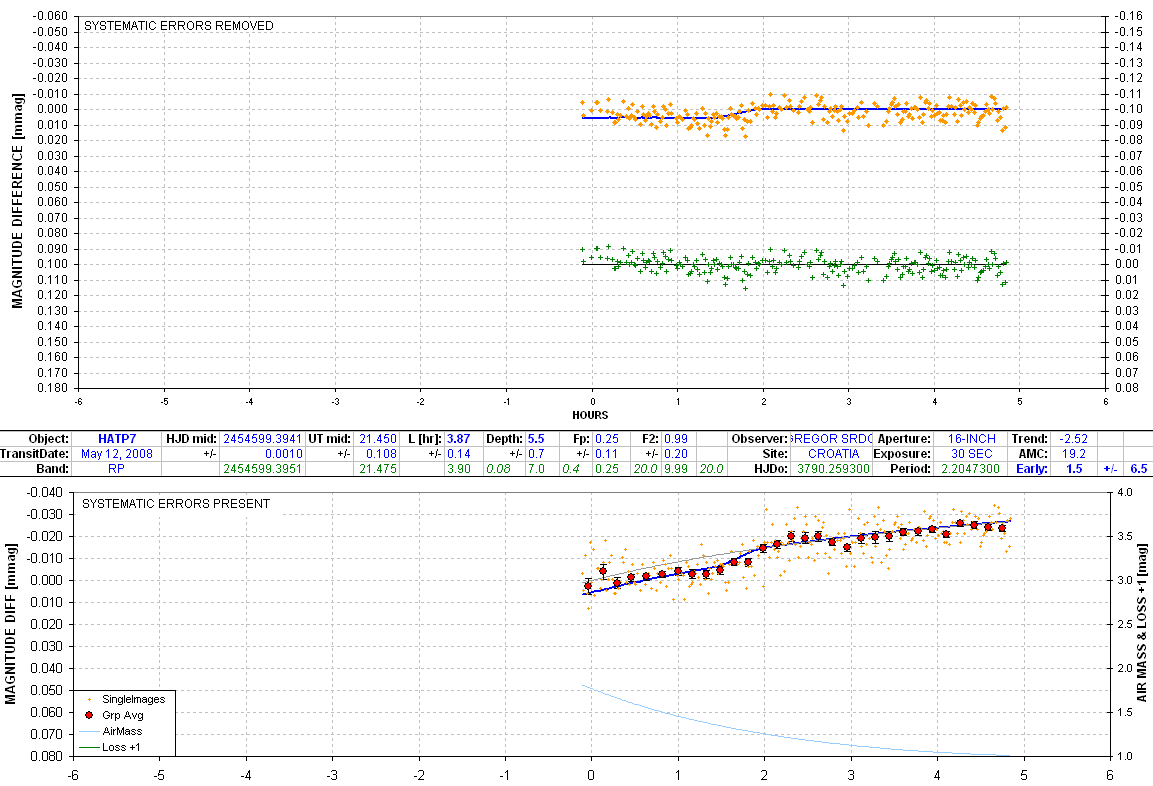
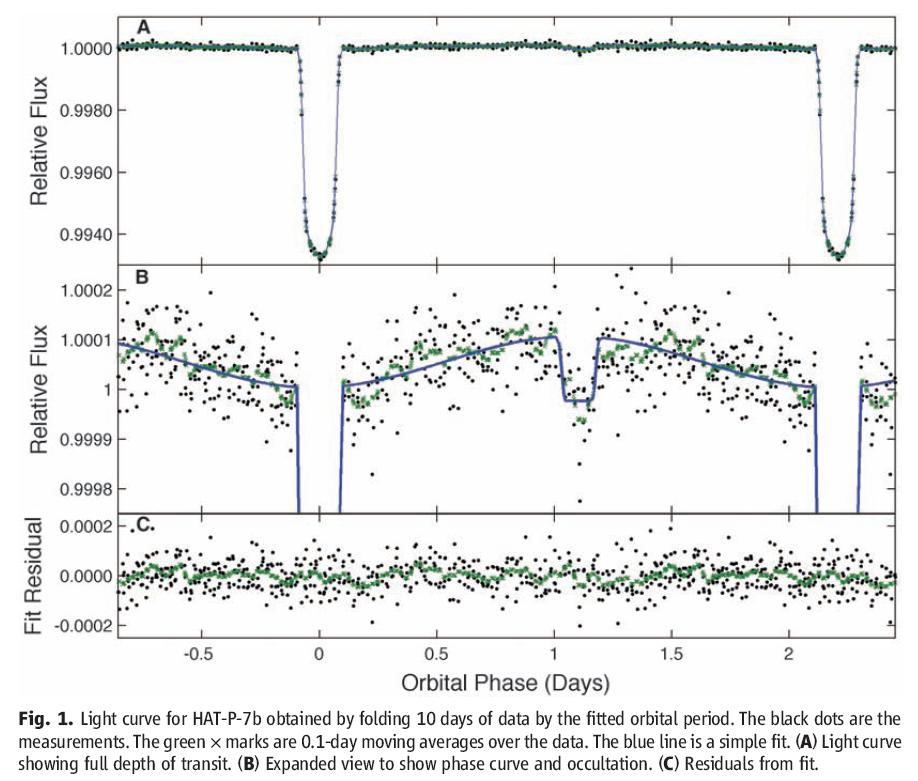

Borucki et al, 2009, Science, 7 August 2009: Vol. 325. no. 5941,
p. 709
Return to calling web page AXA
____________________________________________________________________
WebMaster: Bruce
L. Gary. Nothing on this web page is copyrighted. This site opened: May 08, 2008 . Last Update: 2009.08.25